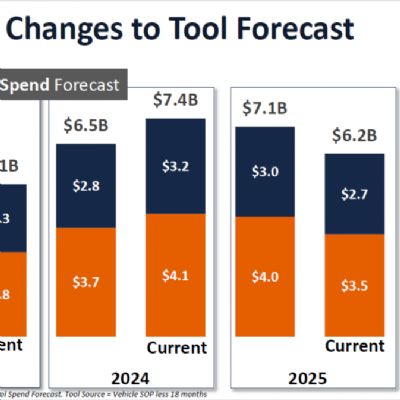Key Trends Power Expected Growth in Metal AM Through 2032
March 30, 2022Comments
After the short-term loss caused by COVID-19 (impacting most notably the aviation market) , the metal-additive manufacturing (AM) market has recovered and is expected to hit $18.5 billion by 2032, according to a new report from IDTechEx. The report, Metal Additive Manufacturing 2022-2032: Technology and Market Outlook, reveals that while global supply chain disruptions have led companies to re-evaluate their operations, metal AM has rebounded and moves forward with an 18.8-percent compounded annual growth rate through 2032. Finding the value-add use cases, from reducing the inventory of replacement parts to making complex production parts, is enabling wider adoption of metal AM across many key industries, according to the report.
Key metal-AM trends identified in the IDTechEx report:
- Lower-cost printers. The high investment needed to engage in metal 3D printing creates high barriers to entry. To lower this barrier, providers have made available lower-pricetag systems.
- Expanding materials portfolio. The limited amount of available materials and their high costs have limited metal AM’s penetration. Thus, materials startups are exploring high-performance metals such as aluminum and alternative feedstock forms such as pellets and slurries.
- New binder jetting entrants. With the promise that binder jetting offers the potential for high-volume part production, more providers recently have launched binder jetting printers. IDTechEx expects to see the binder jetting landscape become more competitive in the medium-term.
- The global supply chain and localized manufacturing. High shipping costs and worker shortages have contributed to disturbances in the global supply chain. This has renewed interest in localized manufacturing to mitigate risks when relying on global manufacturing. Within this environment, metal AM has received attention for facilitating localized manufacturing.
- Continued innovation in printing processes. Established printing technologies such as directed energy deposition and electronic beam melting have well-known limitations that limit their adoption in certain applications. These limitations have inspired startups to create their own variations on established technologies or to commercialize alternative technologies.
- Contract manufacturers founded on proprietary printing technologies. The classic business model for 3D printing companies has been to manufacture and sell printers to customers. But, several companies have opted to use their proprietary printing technology exclusively for inhouse part production. These contract manufacturers might bring new end users to metal AM by eliminating normal barriers for adoption, such as high capital expenditure and the need for labor skilled in AM.
Technologies:







